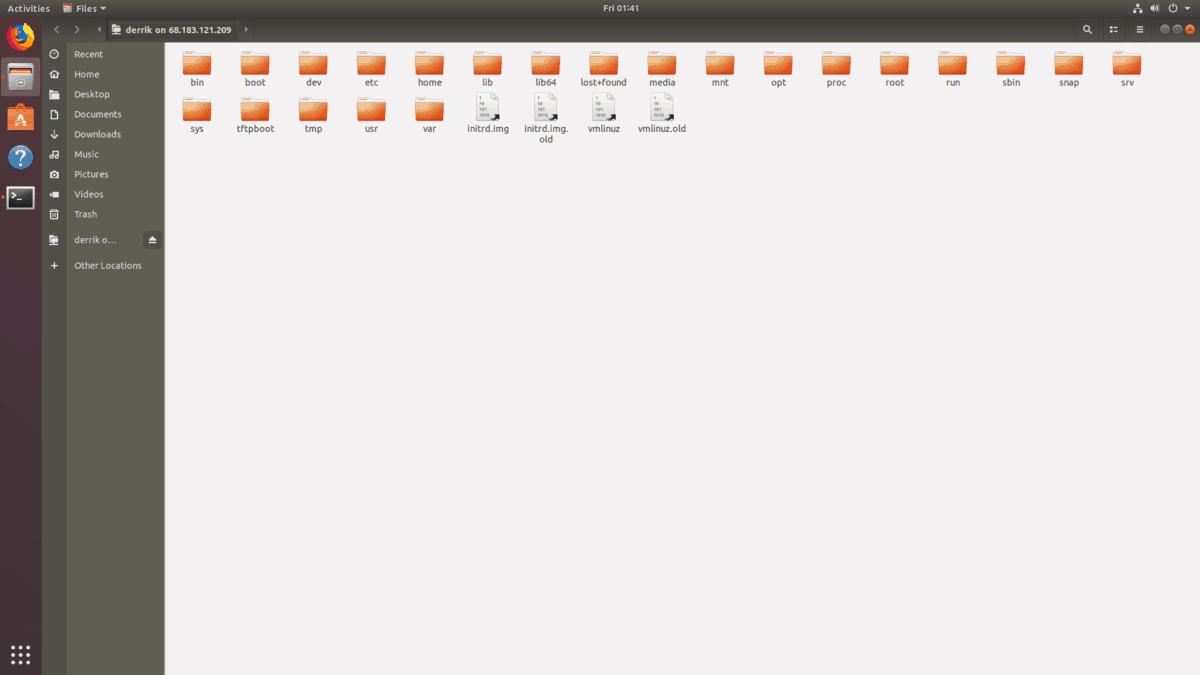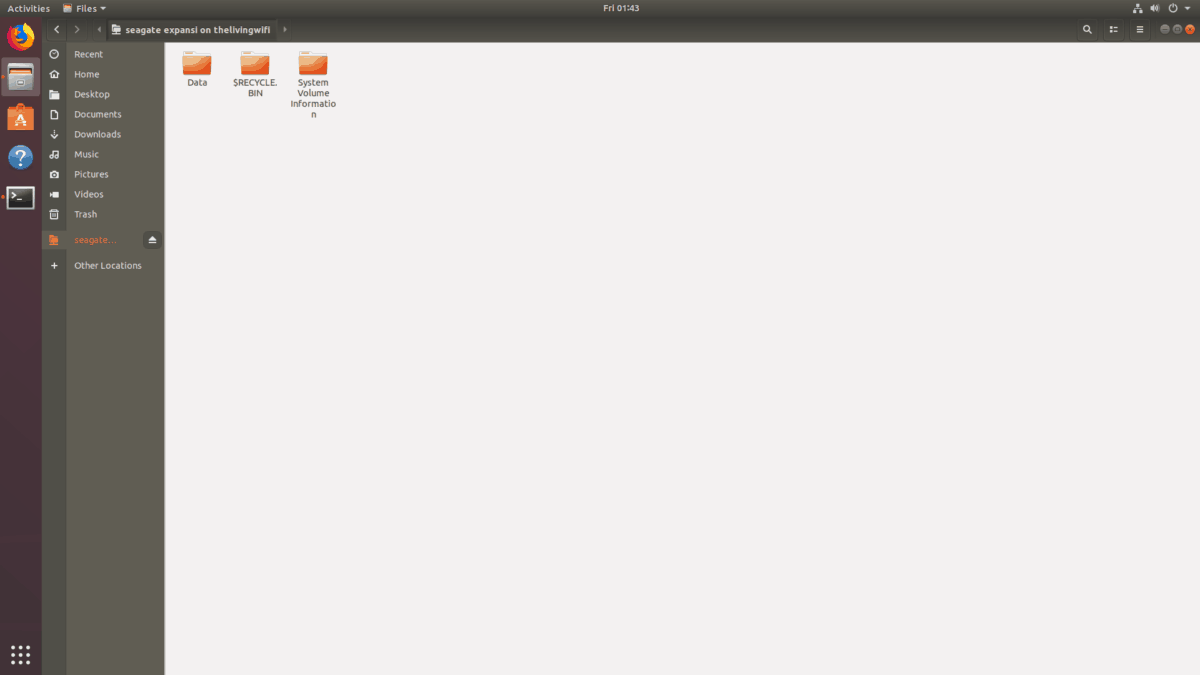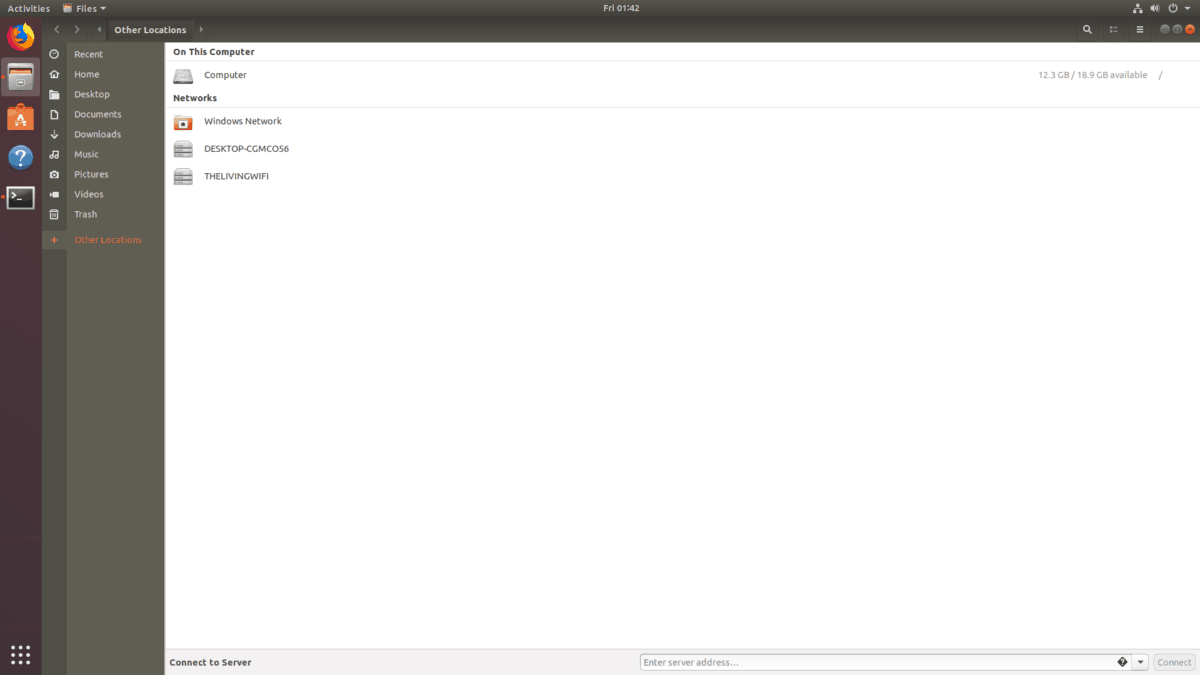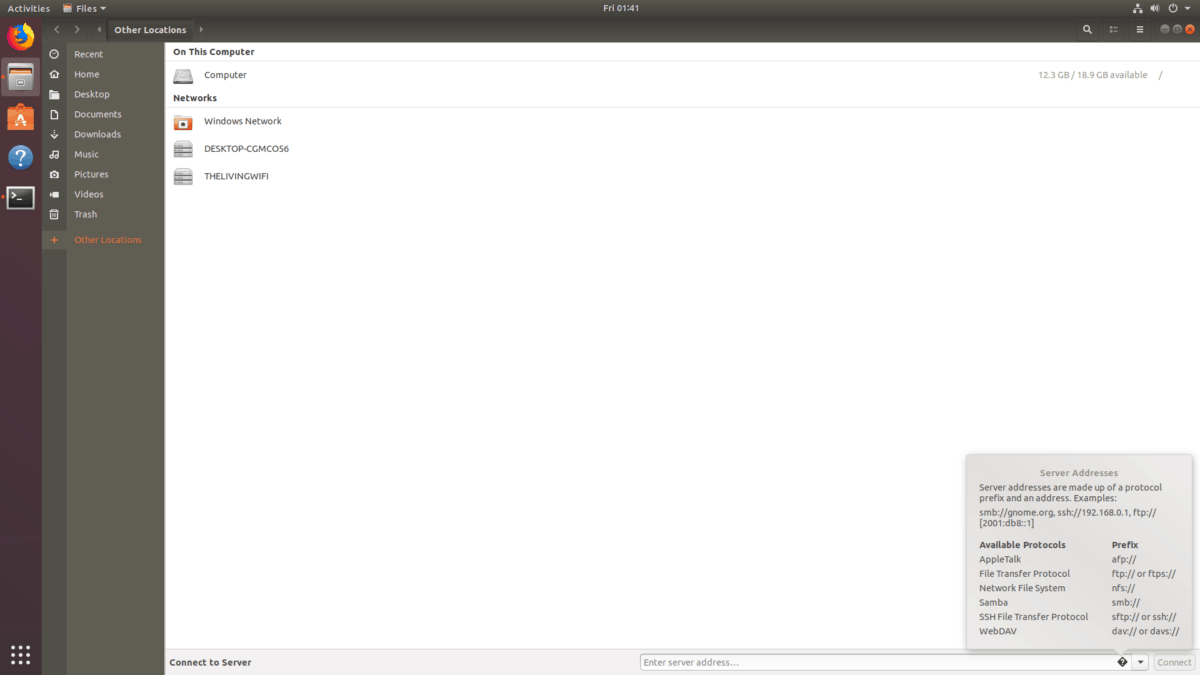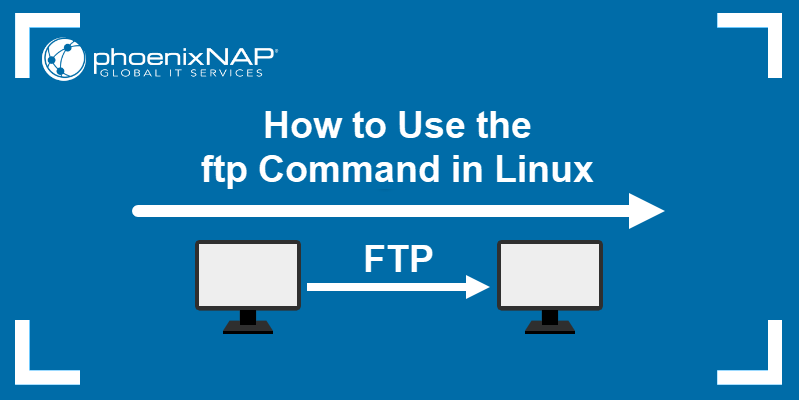- How to connect to servers with Gnome file manager
- Connect to FTP/SFTP
- Connect to SMB (Samba)
- More info on Samba
- Connect to NFS (Network File System)
- Connect to other protocols via browsing
- View other supported protocols
- How to Use the Linux ftp Command
- Linux ftp Command Syntax
- How to Use ftp Command in Linux
- Establish an FTP Connection
How to connect to servers with Gnome file manager
Gnome’s file manager is one of the best in the Linux community. The reason? It’s easy to use, with a vast amount of features. One of the best features it has is its ability to connect to multiple server protocols, including FTP, SFTP, AFP, SMB, SSH, DAV, DAVS, etc.
Over the years, the way users connect to these protocols in the Gnome file manager has changed, because of re-designs. As a result, lots of Gnome users might not know how to access and connect to servers. So, in this guide, we’ll show you how to access remote servers with the Gnome file manager.

Connect to FTP/SFTP
The Gnome file manager (AKA Nautilus) supports a multitude of server protocols. One of the most well-supported protocols for this file manager is FTP/SFTP support.
Allowing users to connect over FTP (especially SFTP) through the Gnome file manager is critical since a lot of Linux users rely on this protocol to access, download and upload files to servers and desktops running Linux over SSH.
To access the FTP protocol in the Gnome file manager, follow the step-by-step instructions below.
Step 1: Open up a new Gnome file manager window. Then, locate the “Other Locations” button on the left-hand side of the app.
Step 2: Click on the “Other Locations” button to take the Nautilus file manager to my computer/networks/server connections page.
Step 3: On my computer/networks/server connections page, look for the text box that states “Connect to Server” and click on the text box.
Step 4: Write in ftp:// followed by the IP address or domain name of the remote FTP server you’re trying to connect to. Keep in mind that SFTP connections also use ftp://, not sftp://
Step 5: Add a “:” symbol at the end of the address, to specify the port to the remote FTP server. It should look like the example below.
Note: most FTP servers use port 21.
ftp://ip.address.of.ftp.server:21
Step 6: Press the “connect” button to send out a connection over FTP/SFTP in the Gnome file manager.
Step 7: Fill out your FTP user/password and click the green “Connect” button to access the server. Or, choose “Anonymous,” if you do not have a user set up.
Connect to SMB (Samba)
Samba is the leading file transfer protocol for Linux, as it works excellent on local networks, and is compatible with all Linux distributions, as well as Android, Windows, macOS, and even iOS with special tools.
Due to Samba’s popularity, the Gnome file manager has some pretty excellent support for the protocol. If you need to make an outgoing connection to a file server running Samba, you’ll need to make use of the smb:// protocol.
To start, launch a new Gnome file manager window on your PC. After that, follow the step-by-step instructions below to learn how to connect out.
Step 1: find the “Other Locations” button on the left-hand side of the Gnome file manager and click on the mouse.
Step 2: make your way to the “Connect to Server” text box and tap on it with the mouse.
Step 3: write out smb:// followed by the IP address of the Samba file server. Alternatively, write out the hostname of the file server, as that works as well. Confused? Copy the examples below.
smb://ip.address.of.samba.file.server
Step 4: click on the “Connect” button to send out a new Samba connection. Assuming your file server has no user-name setup and is public, you’ll instantly see the files and be able to interact with the server.
However, if your server requires a username/password, you must fill out the username/password before using Samba.
More info on Samba
Can’t make a connection to your Samba server using the IP Address or Hostname? Check out the “Connect to other protocols” instructions below. Often, the Gnome file manager will detect and display Samba file servers for you to connect to!
Connect to NFS (Network File System)
Many Gnome file manager users utilize the NFS file system because it is extremely fast, especially over networks and the internet. If you’ve got an NFS server and you need to access it with this file manager, you’ll need to make use of the nfs:// protocol.
Note: connecting to NFS on the Gnome file manager sometimes doesn’t work right. If you have issues, consider following this guide to learn how to auto-mount NFS shares instead.
Step 1: Launch a new Gnome file manager window and click on the “Other Locations” button with the mouse.
Step 2: Make your way to the “Connect to Server” text box and click on it with the mouse.
Step 3: Write nfs:// into the text box. Then, fill out the IP address of the NFS server you’re trying to connect out to. It should look like the example below.
Step 4: Press the “Connect” button to send out a new connection over NFS.
Connect to other protocols via browsing
Along with supporting network protocols like smb, nfs, ftp, etc., the Gnome file manager has a “network” section. In this area, the file manager will do it’s best to look at other computers and devices on the network and display them if possible.
To use this feature, find the “Other Locations” button and click on it. Once there, look under the area that says “Networks.” In this area, you’ll see any LAN servers, such as Samba shares, NFS shares, and anything else that Gnome supports.
To connect to something listed in the “Networks” section and double-click!
View other supported protocols
Want to view some of the lesser-known network protocols that the Gnome file manager supports? Go to “Other Locations.” From there, click on the “?” button in “Connect to Server.” It’ll display all supported protocols.
Derrik Diener is a self-taught Linux aficionado from Midland, Michigan, with 15 years’ experience. Writing insightful Linux tutorials on Addictive Tips since 2017, he simplifies Linux, Windows, and Chrome OS, promoting accessible computing for all.
How to Use the Linux ftp Command
FTP (File Transfer Protocol) is a network protocol used for transferring files from one computer system to another. Even though the safety of FTP tends to spark a lot of discussion, it is still an effective method of transferring files within a secure network.
In this tutorial, we will show you how to use the ftp command to connect to a remote system, transfer files, and manage files and directories.
- Access to a local system and a remote FTP server (learn how to install an FTP server on Ubuntu, CentOS 7, or Raspberry Pi).
- A working Internet connection.
- Access to the terminal window.
IMPORTANT: FTP traffic is not encrypted and is thus considered unsafe. It is not recommended to transfer files over the Internet using FTP. To learn more about secure alternatives to FTP, have a look at our articles on SFTP and TSL vs. SSL.
Linux ftp Command Syntax
The Linux ftp command uses the following basic syntax:
The IP is the IP address of the system you are connecting to.
The options available for the ftp command are:
| FTP Command Options | Description |
|---|---|
| -4 | Use only IPv4. |
| -6 | Use only IPv6. |
| -e | Disables command editing and history support. |
| -p | Uses passive mode for data transfers, allowing you to use FTP despite a firewall that might prevent it. |
| -i | Turns off interactive prompting during multiple file transfers. |
| -n | Disables auto-login attempts on initial connection. |
| -g | Disables file name globbing. |
| -v | Enables verbose output. |
| -d | Enables debugging. |
The ftp command connects you to a remote system and initiates the FTP interface. The FTP interface uses the following commands to manage and transfer files to the remote system:
| Command | Description |
|---|---|
| ! | Temporarily escape to the local shell. |
| $ | Execute a macro. |
| ? | Display help text. |
| account | Supply a password for the remote system. |
| append | Append a local file to a file on the remote system. |
| ascii | Set the file transfer type to network ASCII (default type). |
| bell | Enable a sound alert after each transfer is complete. |
| binary | Set the file transfer type to binary image transfer. |
| bye | Exit the FTP interface. |
| case | Toggle upper/lower case sensitivity when ID mapping during the mget command. |
| cd | Change the current working directory on the remote system. |
| cdup | Change to the parent of the current working directory on the remote system. |
| chmod | Change file permissions on the remote system. |
| close | Exit the FTP interface. |
| cr | Toggle carriage return stripping on ASCII file transfers. |
| debug | Toggle debugging mode. |
| delete | Delete a file from the remote system. |
| dir | List the contents of a directory on the remote system. |
| disconnect | Terminate the FTP session. |
| exit | Terminate the FTP session and exit the FTP interface. |
| form | Set the file transfer format. |
| get | Transfer a file from the remote system to the local machine. |
| glob | Toggle meta character expansion of local file names. |
| hash | Toggle displaying the hash sign («#«) for each transferred data block. |
| help | Display help text. |
| idle | Set an inactivity timer for the remote system. |
| image | Set the file transfer type to binary image transfer. |
| ipany | Allow any type of IP address. |
| ipv4 | Only allow IPv4 addresses. |
| ipv6 | Only allow IPv6 addresses. |
| lcd | Change the current working directory on the local machine. |
| ls | List the contents of a directory on the remote system. |
| macdef | Define a macro. |
| mdelete | Delete multiple files on the remote system. |
| mdir | List the contents of multiple directories on the remote system. |
| mget | Transfer multiple files from the remote system to the local machine. |
| mkdir | Create a directory on the remote system. |
| mls | List the contents of multiple directories on the remote system. |
| mode | Set the file transfer mode. |
| modtime | Show the last time a file on the remote system was modified. |
| mput | Transfer multiple files from the local machine to the remote system. |
| newer | Transfer a file from the remote system to the local machine only if the modification time of the remote file is more recent than that of the local file (if a local version of the file doesn’t exist, the remote file is automatically considered newer). |
| nlist | List the contents of a directory on the remote system. |
| nmap | Set templates for default file name mapping. |
| ntrans | Set translation table for default file name mapping. |
| open | Establish a connection with an FTP server. |
| passive | Enable passive transfer mode. |
| prompt | Force interactive prompts when transferring multiple files. |
| proxy | Execute command on an alternate (proxy) connection. |
| put | Transfer a file from the local machine to the remote system. |
| pwd | Display the current working directory on the remote system. |
| qc | Toggle displaying a control character («?«) in the output of ASCII type commands. |
| quit | Terminate the FTP session and exit the FTP interface. |
| quote | Specify a command as an argument and send it to the FTP server. |
| recv | Transfer a file from the remote system to the local machine. |
| reget | Transfer a file from the remote system to the local machine if the local file is smaller than the remote file. The transfer starts at the end of the local file. If there is no local version of the file, the command doesn’t execute. |
| rename | Rename a file on the remote system. |
| reset | Clear queued command replies. |
| restart | Restart a file transfer command at a set marker. |
| rhelp | Display help text for the remote system. |
| rmdir | Remove a directory on the remote system. |
| rstatus | Show the status of the remote system. |
| runique | Toggle storing files on the local machine with unique filenames. |
| send | Transfer a file from the local machine to the remote system. |
| sendport | Toggle the use of PORT commands. |
| site | Specify a command as an argument and send it to the FTP server as a SITE command. |
| size | Display the size of a file on the remote system. |
| status | Show the status of the FTP interface. |
| struct | Set the file transfer structure. |
| sunique | Toggle storing files on the remote system with unique filenames. |
| system | Show the operating system on the remote system. |
| tenex | Set the file transfer type to allow connecting to TENEX machines. |
| tick | Toggle printing byte counter during transfers. |
| trace | Toggle packet tracing. |
| type | Set a file transfer type. |
| umask | Set a default permissions mask for the local machine. |
| user | Provide username and password for the remote FTP server. |
| verbose | Toggle verbose output. |
How to Use ftp Command in Linux
The ftp command connects a computer system to a remote server using the FTP protocol. Once connected, it also lets users transfer files between the local machine and the remote system, and manage files and directories on the remote system.
Establish an FTP Connection
To establish an FTP connection to a remote system, use the ftp command with the remote system’s IP address:
For instance, connecting to a remote server with the IP address 192.168.100.9:
